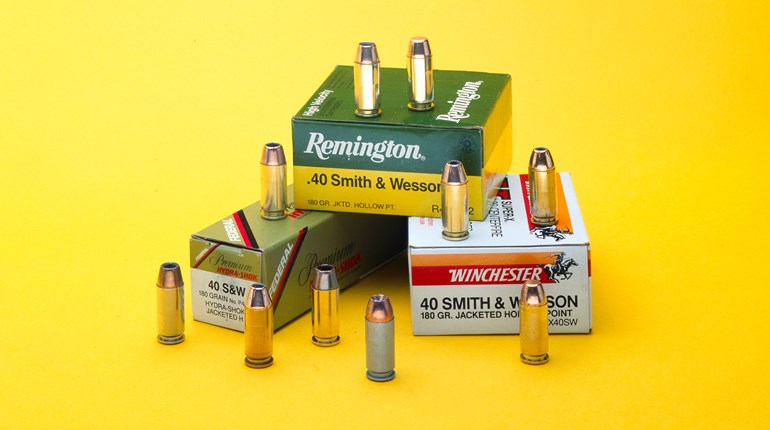
On a number of occasions recently, I’ve had need to mention the so-called “Wondernine Wars.” This was a time in firearms history where literally every maker that mattered introduced some new and different model 9 mm pistol that was pretty much like all the others. We had a distraction in the midst of the “war” sometimes known as the Caliber Campaign, wherein other calibers were considered. That issue has kinda sorted itself out, and the caliber that took home all the marbles is the old 9 mm. We’re at a point in the battle that a healthy bushel of guns persist in the marketplace, while many others have fallen by the wayside and that milestone shooter called the Glock is stronger than ever.
With few exceptions, this ocean of Nines all have double-column magazines and some form of simplified trigger action. In this column, I would call to your attention to one that did not survive, although it did have the requisite 15-round magazine and not just one, but two trigger actions. The gun was made in the U.S. by Browning and sold as the Browning Double Mode (BDM). In evaluating this gun back in those days, I developed a healthy respect for its performance.
I first saw the pistol in the early 1990s, well after the mid-1980s military test trials that chose the Beretta 92 for our armed services as the M9. It was an American-designed-and-made pistol aimed primarily at law enforcement service and civilian use. Note that it appeared before the world of handguns had gone so heavily for polymer frames. At the time of the BDM’s introduction, there was a fierce debate over the type of lockwork used on service-size semi-automatics. In an obvious effort to cover all the bases, Browning’s designer, Peter Sodoma, managed to get two different kinds of trigger lockwork into the gun and give it an unusual name—the Double Mode. Explaining the gun is a little complicated.
Although the BDM was pretty typical in appearance, it was unique in its management. Along the top left-rear edge of the slide there was a round drum with a screw-slotted head. Turning it to align with a “P” on the slide and the lockwork was set to make the BDM behave like a DA/SA trigger system. When the shooter swept the trigger back, the hammer came back and released to fire the first shot. The slide cycled in recoil, cocking the hammer and resetting the trigger to the rear for a crisp single-action pull for the next one (or more). This is how most other pistols of that time worked.
But stay tuned—there’s more. Turn the drum selector to align with an “R” (for revolver) and the gun behaved somewhat like a revolver. There was no multi-chambered cylinder of course, but the trigger pull was now the same long, smooth stroke as a revolver. And, like the same revolver, you can thumb-cock the exposed hammer for a crisp single-action pull. This is approximately the same trigger action as most DA/SA revolvers in police-service use. There was also a safety that doubled as a decocker when the BDM was in pistol mode.
The idea was to give the BDM user a gun that could be arranged to perform to suit the needs and skills of various users. At that point in handgunning history, there was a considerable argument that the long-stroke, double-action-only trigger on most revolvers was desirable for reasons of handling and safety. Semi-automatic pistol advocates maintained the increased capacity of a 9 mm semi-automatic—as well as the obviously quicker reload time—rendering the wheelgun obsolete.
The BDM offered dual-lockwork systems and should have been welcome for its unique nature. I really liked the pistol, as did some of the most-informed handgunners I knew. But, I feel the options were not welcome with the clarion call that hailed the millennium. Rather, they confused too many handgunners, who did not buy them. In order to boost sales, Browning even offered two variants of the gun.
The BRM (Browning Revolver Mode) had no switch and only a DAO trigger. The BPM-D (Browning Pistol Mode-Decocker) was a conventional DA/SA. I have never handled either of the simplified versions of the BDM and would very much like to do so. If the revolver-like BRM was thumb-cockable, it would be an interesting handgun. As it was, the Browning BDM died a quiet death after less than a decade of production. That is a shame, because the BDM had other virtues.
BDMs are reliable and accurate; I know of several torture-test shoots where the gun was subject to protracted firing. They came out of it with flying colors. But there is one additional virtue of the BDM that makes it competitive to the present.
The BDM is a full-size, all-steel, 15+1-round pistol comparable to models from Smith & Wesson, Beretta, Ruger, FN America, Heckler & Koch, Taurus and many others. Today, with molded-polymer frames, most companies offer a service semi-auto that is a lot more ergonomic than the contemporaries of the BDM, but not that unique gun. Of all guns in this bracket, this one is always my first choice for shooters with smaller hands. The means of doing that is largely a extremely compact butt section, which results from the clever use of springs in the lockwork. Some small-handed shooters struggle with guns that are just too big. For them, Browning’s BDM is a sound hunk of top-notch fightin’ iron.




































